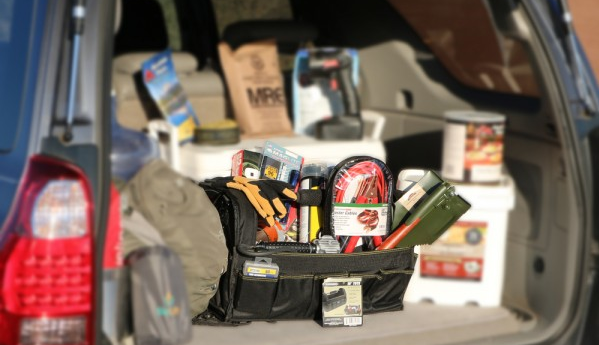Understanding prepper speak: Important acronyms and definitions
12/14/2021 / By Zoey Sky

Prepping may be an unusual concept for non-preppers, but explaining commonly used acronyms, like BOBs and EDCs, can help them understand what preppers are talking about when packing a bug-out bag or everyday carry kit. If you’re interested in becoming a prepper, learning about these acronyms and terms will help you understand most articles and guides that you find online. (h/t to: AYearWithoutTheGroceryStore.com)
Common prepping acronyms
These acronyms may seem familiar to preppers, but explaining them to your family and friends can also help them understand why it’s important to have a BOB before SHTF.
Bug-out bag (BOB)
A bug-out bag contains supplies that you need to survive for 72 days. With a BOB, you can quickly evacuate in a survival scenario like a natural disaster.
You can turn a sturdy backpack into a BOB by including these crucial survival supplies:
- Crank radio
- Duct tape
- First aid kit
- Flashlight
- Hammock
- Hunting knife
- Lighter
- Multitool
- Paracord
- Snacks (Trail mix, protein bars, etc.)
- Tarp
- Water filter
- Whistle
Bug-out location (BOL)
When you decide that it’s time to evacuate, your family will head to a hideout or your bug-out location.
Before disaster strikes, look for a suitable location for your BOL and plan accordingly. Find out if the area is safe, then set up your preps and bring some supplies to your BOL.
Bug-out vehicle (BOV)
If your BOL is too far to reach while traveling on foot, you may need to prepare your bug-out vehicle in advance so you can quickly escape with your family when disaster strikes.
Everyday carry/ everyday carry kit (EDC/EDC kit)
Your everyday carry may differ from someone else’s because these items are what you carry with you on a “regular” day. If you have allergies, your EDC will probably include a facemask and antihistamines.
If you wear a uniform to work, your kit might include a small sewing kit for emergency repairs. When preparing an EDC, include items that you will need to address common emergencies.
First in, first out (FIFO)
FIFO is crucial for preppers who maintain a food stockpile because you need to rotate all the items in your pantry to prevent spoilage. This means using up the items you bought first before they expire and replenishing your supply so you have enough when you need to bug-in in a long-term disaster scenario.
Using FIFO ensures that your food supply will last long in your stockpile. Organize your supplies so that the older items are within reach and place newer cans of foods behind your shelves so they are used up last.
Sh*t hits the fan (SHTF)
SHTF usually refers to an event that may require you to bug in or bug out for days or weeks at a time. Before SHTF, you need to fortify your home and set up a survival supply so you have enough clean water and food for the whole family. (Related: A beginner’s 7-step guide to surviving the first week after SHTF.)
Events like an epidemic, regional or civil war, or a nuclear detonation may cause an SHTF scenario. Once things calm down after SHTF, there’s a chance that things might return to normal.
Common prepping terms
You may come across these terms when reading prepping articles online.
Bugging in
Bugging in means staying at home during a disaster.
Bugging out
Bugging out means evacuating your home during a disaster and heading to your BOL.
Cache
A cache refers to a hidden stash of supplies that you can access if your main source of supplies gets raided or runs out. You can bury or hide survival caches along the path to your BOL so you can replenish your supplies.
Rule of threes
According to the survival rule of threes, you can survive for three minutes without oxygen, three hours without shelter in harsh environments, three days without water and three weeks without food.
Before SHTF, prepare a BOB and EDC so you have access to supplies that will help you survive when disaster strikes.
Visit Preparedness.news to read more articles with useful tips for beginners.
Sources include:
Tagged Under: bug in, bug out, disaster, emergency preparedness, off grid, preparedness, prepper, prepping, prepping acronyms, SHTF, survival, Survival Tips
RECENT NEWS & ARTICLES
COPYRIGHT © 2017 OFFGRID NEWS



















